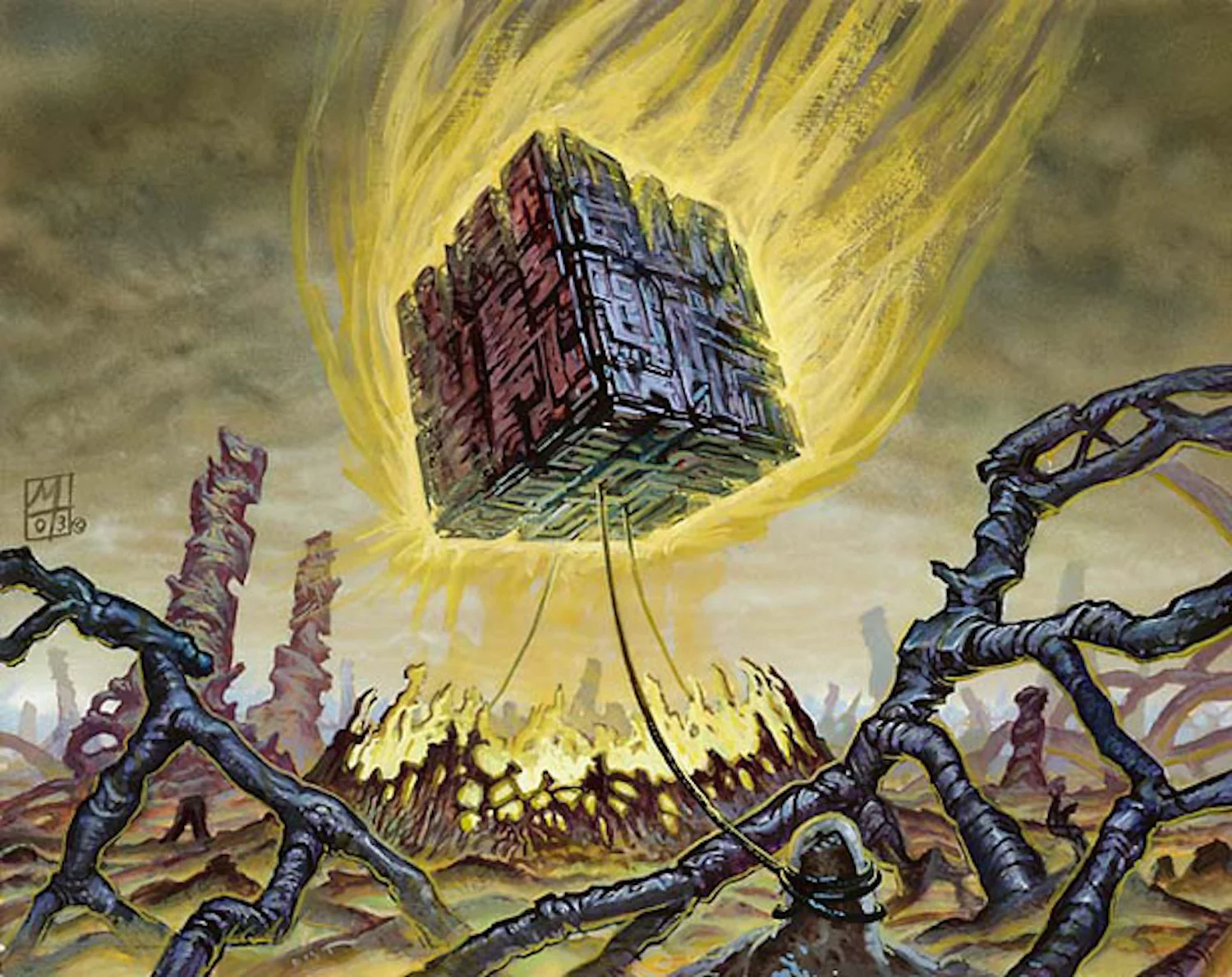Which cards does this cube use?
Which cards does this cube use?
The cube I've made is a 450 card singleton pauper cube, primarily drawing on sets from Lorwyn (2007) up through Throne of Eldraine (2019), with a few going back as far as Mirrodin (2003). "Singleton" means there are no duplicate cards — for each card that made the cut, only one copy is in the cube. The "pauper" bit means all the cards are of common rarity (as opposed to uncommons, rares, and mythic rares). The power level and complexity of common cards is usually on the lower end of the scale, however the commons I've selected are among the strongest cards for that rarity.
I've entered the main 450 cards on CubeTutor, which you can view as a text list or in a visual display of each card image. (There’s also a 90-card “sideboard” there for the cube, which is an optional expansion to bring the pool to 540 cards if 6 players want to just play sealed instead of drafting.) CubeTutor has the option to test out what drafting a particular cube is like, and you can try out drafting the main 450 cards in my pauper cube here.
Why did I limit the cards to commons, or to the sets listed above? Mostly because it's what I owned already! I've got loads of commons from all those sets, so it gave me plenty to work with. Commons are the workhorses of every set, and playing with a curated set of the strongest commons spanning decades is a cool exploration of the “basics” of Magic.
I've also built around a few mechanical themes, beyond just limiting things to common cards. The two main themes are:
+1/+1 counters
Flexibility
Very few "vanilla" cards are included. Most have at least one keyword, and many have activated abilities. Regarding +1/+1 counters, there's tons of cards that specifically hinge on that mechanic, represented in all 5 mana colors. Creatures that gain counters or enter play with them; spells that move them, add them, etc. There's a lot of it! In terms of flexibility, wherever possible I picked cards with alternate casting costs, conditional bonus effects, choices to make after casting, synergy with paired colors, and so on.
There are also a handful of other light themes running through the set. By and large these are sprinkles of mechanics I personally like, featured just enough to possibly build around, or maybe just as a cycle across all 5 colors. Words in italics represent specific named mechanics or keywords, with links to Scryfall for examples:
Graveyard triggers & recursion (Flashback, Scavenge, Morbid, etc.)
Token creation + Populate
Color pairs/Ravnica guilds (including hybrid mana cards)
Enchantments with upside (Bestow, Totem Armor, etc.)


